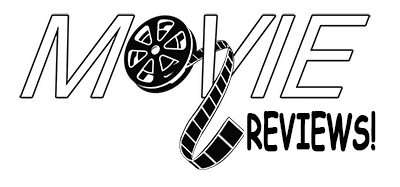This also feels like a perfect example of the life and death of a TV show in microcosm. Thinking they needed to spice things up, they wrote in a ‘cooler’ central character after a dozen or so episodes (the mysterious Dash X played by Jason Marsden). Not coincidentally, this is about when the show starts to go downhill (leading to its inevitable cancellation). They at least were able to right the ship one final time with the final produced episode*: the brilliant, 4th-wall-breaking “Reality Takes a Holiday,” directed by Ken Kwapis (A Walk in the Woods, 2015). Dante actually gets to play himself as the director of Eerie, Indiana, in this incredible moment in television history…
The influence of Twin Peaks can’t be denied here: this is clearly a more universal take on the ‘what leaks beneath the surface in small-town America’ trope that Lynch perfected in that show and in Blue Velvet, etc. Other shows, like CBS’s Picket Fences, attempted this as well. It all seems part of that pre-9/11 “End of History” moment where the lack of major existential threats caused media to look inward and ask, “what’s scarier than the suburbs?” (TP's Deputy Andy — Harry Goaz — actually shows up here playing a cop in a recurring role.)
While I thought there would be more world-building, it's very episodic. For the most part, all of the storylines are contained in their 23-minute run-times. There are plenty of threads that felt like they could have been further developed in this regard, but I have no idea if they ever would have if the show had survived. (Of note: while the post-Dash X portion of the series is not the strongest material, it did feel like they were leaning into at least trying to flush out the universe.) In the end, the highs are very entertaining, and the lows are pretty bad (there are a handful of total nonstarters).
Some of those highlights include the Dante-directed, Dick Miller and Henry Gibson-featuring fourth episode ("The Losers"). This is such an amazing set constructed specifically for and only this ep:

All of Dante’s five episodes are good, for the most part, and represent the best of what the show has to offer. Other interesting names pop up in the director’s chair, too: including actor Tim Hunter (the Nicolas Cage vehicle Looking Glass, 2018) and legendary charactor actor Bob Balaban who helmed three episodes, the best being the series’s 10th, “The Lost Hour.” Ellen DeGeneres’s brother Vance is credited as the sole writer on that one, as well as the series-closing standout “Reality Takes a Holiday.” Some notable performers pop up in guest spots as well, including Tobey Maguire, Ray Walston, Anita Morris, Nikki Cox, René Auberjonois, Matt Frewer and Stephen Root.
The series has acquired something of a cult following over the years, and its popularity was strong enough to warrant a 1997 spin-off Eerie, Indiana: The Other Dimension, which features an entirely new cast and production team. I will not be watching that 15-episode run any time soon, however.
Here is a syllabus for ‘must-watch’ episodes if you don’t feel like tackling the entire series:
• All the Dante episodes, but especially the aforementioned Miller/Gibson E4 and the sweetest episode of the show, E7 (“"Heart on a Chain").
• E8 (“The Dead Letter”) if only to see a young Tobey Maguire.
• Bob Balaban’s first directorial credit, also previously mentioned. E10 (“The Lost Hour” featuring Nikki Cox) introduces a time-warp multiverse version of Eerie, which feels like it could have been fodder for world-building expansion.
• E14 (“Mr. Chaney”) which features Stephen Root as a werewolf and is jam-packed with references and allusions (including to Dante’s own The Howling).
• And the best (and effectively last) ep, E18 (“Reality Takes a Holiday”) which is a bittersweet indication of where this series could have gone if it had been given more time to flourish.
* a 19th episode filmed before the Dash X retooling wound up airing later in syndication
CHRONOLOGICALLY
⫷ MOVIE #1,895 - (YOU ARE HERE) - MOVIE #1,897 ⫸
⫷ MOVIE #1,895 - (YOU ARE HERE) - MOVIE #1,897 ⫸
Eerie, Indiana is an American horror science fiction television series that originally aired on NBC from September 15, 1991, to December 9, 1993. The series was created by José Rivera and Karl Schaefer, with Joe Dante serving as creative consultant. It was released on September 15, 1991.



0 comments:
Post a Comment